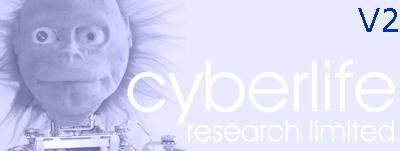
|
|
|
Nobody knows what happens in the next visual area after V1, but for Lucy I developed a neural mechanism that could take the output of her V1 (an isolated, centred boundary) and manipulate it in such a way that she could learn to recognise simple shapes, regardless of their orientation, position and size. This property (known as visual invariance) is currently a complete mystery and easily the biggest reason why computer vision has made so little progress so far. Invariance is actually universal to all perception - we can recognise a tune regardless of the key it is played in, or recognise a letter drawn out with a finger on our skin, regardless of where on our body we feel it. Lucy does solve the invariance problem to a significant extent for vision, although I'm absolutely certain now that she doesn't do it the way the brain does it. Nevertheless, it was an interesting and informative exercise and has led to some new ideas. This is a diagram of Lucy's so-called "V2", although it's too complex to explain in a web page. My book has more information if you're interested.
|
Copyright © 2004 Cyberlife Research Ltd. |